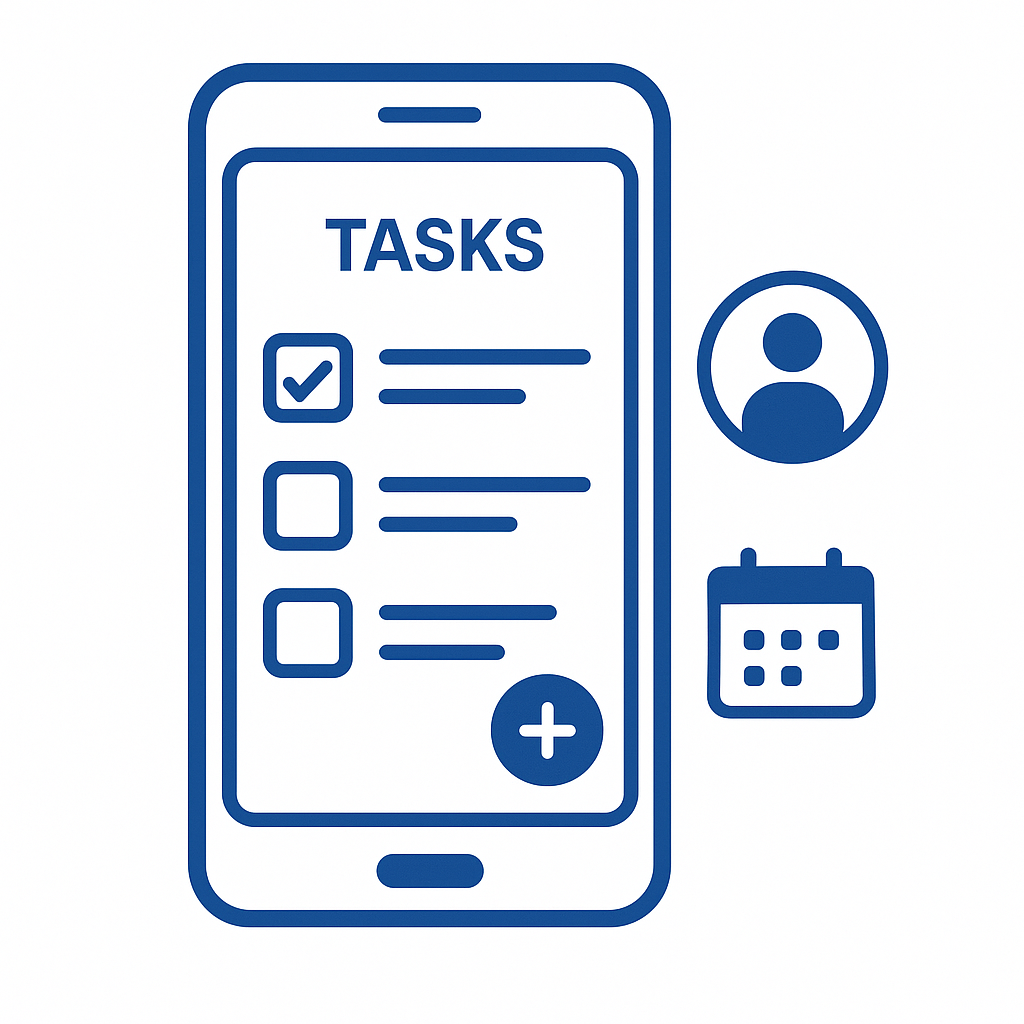
Overview
Our team was commissioned to build a comprehensive task management application aimed at boosting team productivity and collaboration. The application was designed to operate seamlessly across web, desktop, and mobile platforms, ensuring accessibility for users in diverse professional settings. The primary goal was to create an intuitive, feature-rich platform that enabled efficient task management, team organization, and real-time communication.
Objectives
- Cross-Platform Consistency: Deliver a uniform user experience across web, desktop, and mobile interfaces.
- Efficient Task Management: Provide robust tools for creating, editing, viewing, and deleting tasks and organizational groups.
- Collaborative Features: Integrate commenting, file attachments, and email notifications to enhance team interaction.
- Customizable Interface: Offer multiple visual themes to cater to varied user preferences.
- Secure and Controlled Access: Implement strict permission controls to ensure only authorized users could perform sensitive actions.
Development Process
Phase 1: Planning and Design
We started by outlining core functionalities: task creation, status tracking, group management, and user invitations. Wireframes were developed to map out a clean, user-friendly dashboard. A modular architecture was chosen to support scalability and maintainability across platforms.
Challenges:
- Cross-Platform Uniformity: Achieving consistent functionality and appearance across web, desktop, and mobile platforms was challenging due to differences in rendering and interaction models.
- Solution: We utilized a responsive design framework and maintained a shared codebase for web and desktop, with native wrappers for desktop deployment. Mobile apps were built natively to align with platform-specific guidelines while preserving core features and aesthetics.
Phase 2: Implementation
The application was developed with the following key components:
- Dashboard: A centralized interface displaying tasks and groups, with navigation options for creating or viewing tasks and groups.
- Task Management: Tools for creating, editing, updating status, and deleting tasks, including support for due dates, priorities, and rich-text descriptions.
- Group Management: Features to create, edit, and delete organizational groups, with controls for user membership and ownership.
- Collaboration Tools: A commenting system, file attachment capabilities, and email notifications for task updates.
- Theming: Three distinct themes (light, dark, minimal) to enhance user personalization.
Challenges:
- Feature Completeness: Early versions lacked full support for deleting organizational groups, limiting users’ ability to manage team structures effectively.
- Solution: We introduced a deletion mechanism for groups, mirroring the task deletion process. This included permission checks to restrict actions to group owners or administrators and ensured related data (tasks and memberships) was removed appropriately.
- Complex Collaboration Needs: Users required more robust tools for team interaction beyond basic task assignments.
- Solution: We integrated a commenting system for tasks and enabled file attachments, allowing users to share context and resources. Email notifications were added to keep team members informed of updates, improving collaboration.
Phase 3: Testing and Optimization
Rigorous testing was conducted across all platforms:
- Web: Validated compatibility across major browsers (Chrome, Firefox, Safari, Edge).
- Desktop: Deployed via a cross-platform framework for Windows and macOS, ensuring performance and offline functionality.
- Mobile: Developed native iOS and Android apps, tested on various devices to verify responsiveness and touch interactions.
Challenges:
- Mobile Performance: Loading large task lists on mobile devices was initially slow, impacting user experience.
- Solution: We optimized data fetching by implementing lazy loading and caching frequently accessed data locally. This significantly improved mobile app responsiveness.
- Permission Inconsistencies: Some users encountered issues where unauthorized actions were visible or accessible.
- Solution: We standardized permission logic across the application, enforcing strict checks on the backend (based on user roles and ownership) and hiding restricted actions in the frontend for non-authorized users.
Phase 4: Deployment and Feedback
The application was rolled out incrementally, starting with the web version, followed by desktop and mobile apps. User feedback emphasized the need for clearer visual feedback on actions like deletions and more intuitive navigation.
Challenges:
- Action Feedback: Users reported confusion due to delayed or unclear confirmation of actions like task or group deletions.
- Solution: We enhanced the interface to provide immediate visual feedback, such as removing deleted items from the display and showing success notifications. For group deletions, we ensured related tasks were updated across views to maintain consistency.
- Navigation Clarity: Some users found it difficult to navigate between task and group management sections due to ambiguous menu options.
- Solution: We refined navigation labels (e.g., “Create Task,” “View Groups”) and introduced tooltips to guide users. Consistent styling across themes further improved navigational cues.
Outcomes
- Seamless Cross-Platform Experience: The application achieved over 95% feature consistency across web, desktop, and mobile, providing a unified user experience.
- Increased Productivity: Beta testers reported a 30% improvement in task completion rates, attributed to the intuitive interface and collaborative features.
- Comprehensive Management Tools: Full support for creating, editing, and deleting tasks and groups, with robust permission controls, met all user requirements.
- Enhanced User Engagement: The customizable themes and collaboration tools (comments, attachments, notifications) boosted user satisfaction and adoption.
- Accessibility and Security: The application adhered to accessibility standards and enforced strict access controls, ensuring a secure environment.
Lessons Learned
- Thorough Feature Planning: The initial oversight in group deletion functionality highlighted the importance of comprehensive feature mapping. We now prioritize detailed requirements analysis in early project stages.
- Iterative User Feedback: Rapid feedback loops were critical for identifying usability issues, reinforcing the value of continuous user testing throughout development.
- Performance Optimization: Addressing mobile performance early through caching and lazy loading proved essential for user satisfaction, a practice we’ve integrated into future projects.
Conclusion
The task management application successfully delivered a powerful, user-centric solution for teams across web, desktop, and mobile platforms. By overcoming challenges related to feature completeness, performance, and user experience, we created a reliable tool that significantly enhanced team productivity and collaboration. This project demonstrated the importance of cross-platform consistency, proactive optimization, and iterative user-driven development in building high-quality software solutions.
Ready to Transform Your Business?
Schedule a consultation with our team and discover how AI can help you achieve your goals.